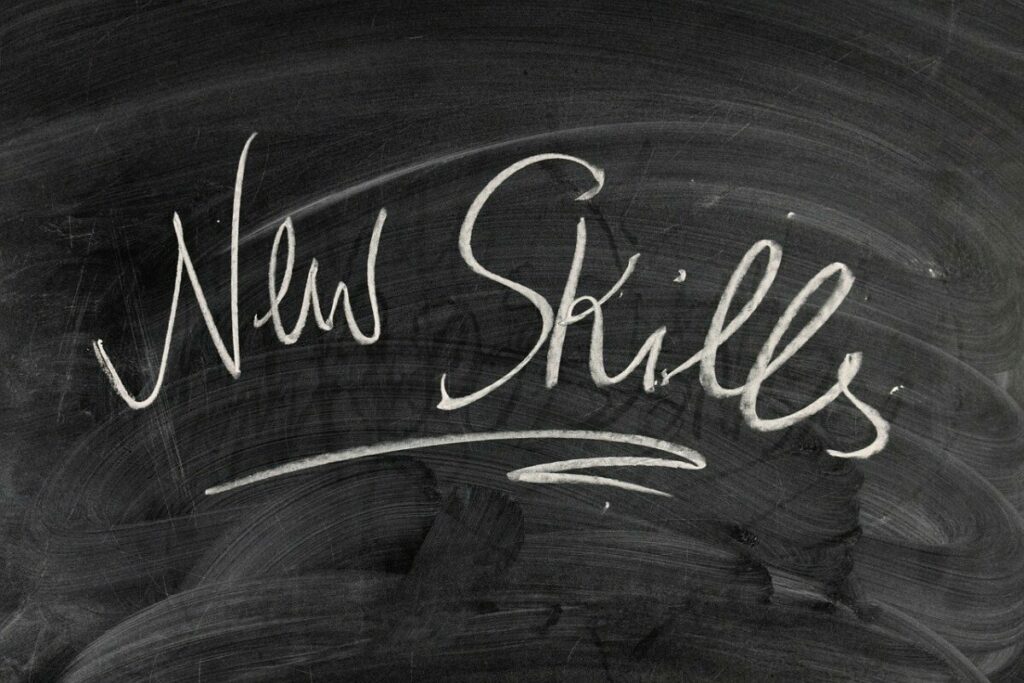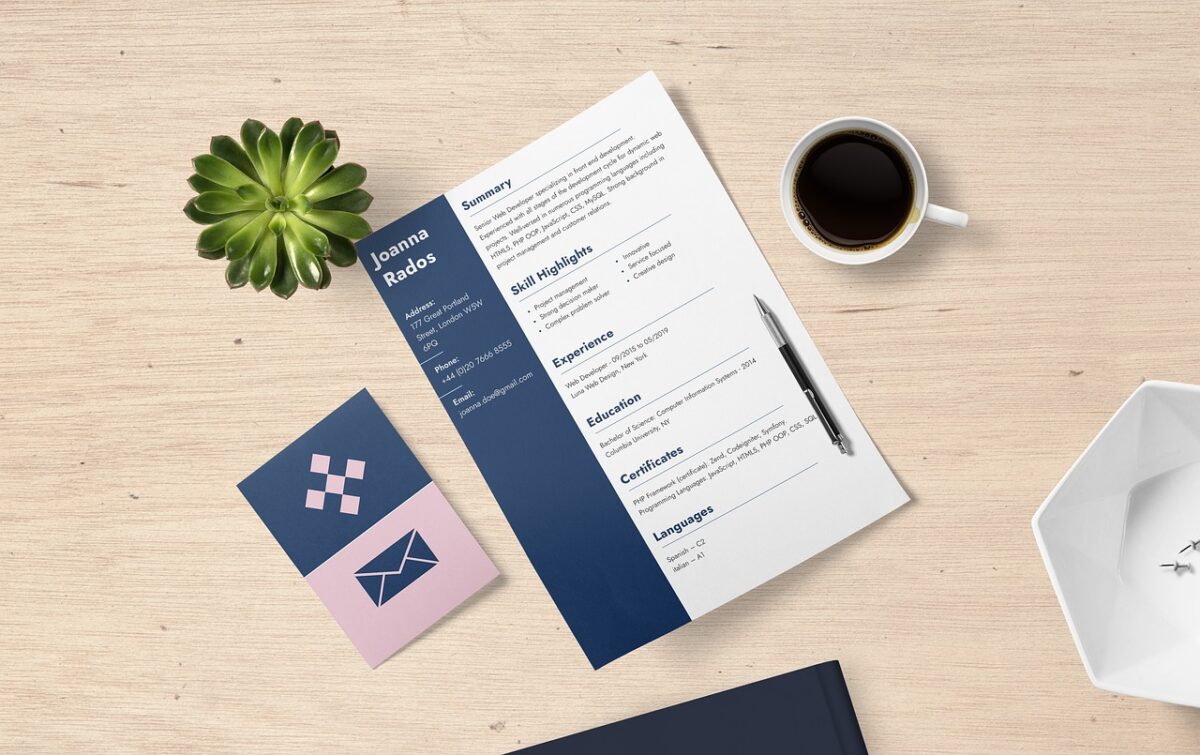How To Upgrade Your Job Descriptions This Weekend

In today’s fiercely competitive job market, the power of a compelling job description cannot be understated. It’s the beacon that attracts the brightest talents to your organisation, reflects your company’s culture, and is the first step in aligning expectations between your business and potential employees. But how often do we pause and evaluate the effectiveness of our job descriptions? This weekend presents the perfect opportunity to do just that.
Welcome to ‘How To Upgrade Your Job Descriptions This Weekend,’ a comprehensive guide designed specifically for employers, entrepreneurs, Hiring Managers, and HR professionals. In this blog, we delve into the pivotal steps to elevate your job descriptions and introduce an array of writing tools and resources. These invaluable assets are set to make the process of upgrading and updating your job descriptions quicker and easier than ever before.
Join us as we embark on a transformative journey to ensure your job descriptions stand out in the sea of sameness. Let’s attract the talent your company deserves and set the stage for mutual success.
Quick Links:
- 1. Reflect On Your Company’s Core Values And Culture
- 2. Identify The Must-Have Vs. Nice-To-Have Qualifications
- 3. Make Use Of Engaging And Inclusive Language
- 4. Structure For Clarity And Impact
- 5. Highlight Growth Opportunities And Benefits
- 6. Incorporate Feedback From Current Employees
- 7. Update Regularly And Keep It Fresh
- 8. Utilise Job Description Writing Tools And Resources
- Job Description And Job Duties FAQs
Highlights And Key Takeaways:
- The weekend can be used effectively to consider any shifts in role requirements, technological advancements, or changes in strategic focus that should be reflected in your job descriptions.
- Updating during the weekend means that your refreshed job descriptions are ready to catch the eye of ambitious job seekers at the start of the new week, positioning your company as proactive and attentive to detail.
- Leveraging the right job description writing tools and resources can significantly streamline the process and enhance the quality of your outputs
1. Reflect On Your Company’s Core Values And Culture

Reflecting on your company’s core values and culture is paramount when updating job descriptions over the weekend. This foundational step ensures that your recruitment efforts are not just about filling a vacancy but about attracting individuals who fit your organisation’s ethos and long-term strategic objectives. By infusing your job descriptions with the unique essence of your company’s culture and values, you invite like-minded candidates who possess the requisite skills and share your organisation’s vision and values.
To seamlessly integrate your company’s core values and culture into job descriptions, consider the following exercises and questions:
- Identify your company’s core values: What are the non-negotiable qualities that your organisation stands for? Describe these in clear, compelling language within the job description to ensure alignment.
- Articulate your company’s culture: How do the day-to-day working conditions and colleague interactions reflect your company’s ethos? Be explicit about the environment and personal characteristics that thrive within your team.
- Link responsibilities to strategic objectives: Show how the role contributes to the company’s broader goals. This helps candidates see the bigger picture and understand their potential impact.
- Detail the role’s focus: Clearly outline the day-to-day responsibilities, ensuring candidates can gauge if they’re a good fit for the job’s specific demands and working conditions.
- Highlight desirable personal characteristics: Describe the personal attributes valued in your company, helping potential applicants to self-select based on compatibility with these traits.
For further inspiration on how to weave your company’s culture and values into your job descriptions effectively, consider exploring our blog, How To Infuse Company Culture And Brand Values Into Your Job Descriptions. This resource from our recruitment blog offers deeper insights and practical examples to enrich your job descriptions, making them more attractive to candidates who are not just looking for a job but a place where they can belong and grow.
Remember, when you update job descriptions, this is not just a task – it’s an opportunity to showcase your company’s identity and attract the best talent who will contribute to achieving your strategic objectives. By focusing on the unique aspects of your company culture and the specific responsibilities and characteristics of the role, you can ensure a better fit for your team and potential candidates.
2. Identify The Must-Have Vs. Nice-To-Have Qualifications

When writing job descriptions, distinguishing between must-have and nice-to-have qualifications is crucial for creating clarity around the role and attracting a diverse pool of applicants. This distinction helps potential candidates understand the essential functions of the job and the minimum skills needed versus the preferred but not mandatory qualifications. This approach streamlines the application process and encourages individuals from various backgrounds to apply, thereby enhancing diversity within your organisation.
Must-Have Qualifications:
- Job Title and Essential Functions: Begin by clearly stating the job title and summarising the core duties and responsibilities. This will help you understand what is non-negotiable in the role.
- Minimum Skills Needed: Specify the skills necessary to perform the job’s essential functions. This might include specific knowledge areas, technical abilities, or certifications.
- Job Analysis: Conduct a thorough job analysis to identify the tasks that the employee must be able to perform. This should be a detailed enumeration of the duties and responsibilities, ensuring that the essential functions are distinguished from less critical tasks.
Nice-to-Have Qualifications:
- Preferred Education: While certain roles may require specific qualifications, often, a preferred education section can highlight academic backgrounds that are beneficial but not essential.
- Other Duties and Occasional Tasks: Mention tasks that may come up occasionally but are not the core focus of the role. This signals applicants that flexibility and a willingness to engage in various tasks are appreciated.
- Problem Solving and Additional Knowledge: Highlighting desired problem-solving skills or additional areas of knowledge that would enhance a candidate’s contribution to the role without being strictly necessary can attract a broader range of applicants.
To ensure you’re striking the right balance in your job descriptions and to utilise your weekend time effectively, consider consulting our blogs, What Skills Are Needed For Different Jobs and What Qualifications Should I Include In A Job Description. These resources can provide further insights into tailoring your job descriptions to include a mix of essential and desirable qualifications, thereby making your roles accessible to a wider audience while still maintaining a high standard for the essential skills required.
Remember, the goal is to reduce barriers to entry where possible without compromising on the ability to perform the job effectively. By thoughtfully outlining the duties and responsibilities and clearly differentiating between the must-have and nice-to-have qualifications, your job descriptions will attract diverse and capable candidates.
3. Make Use Of Engaging And Inclusive Language

Crafting an effective job description requires clarity about the role and awareness of how language can attract or deter potential applicants. The words you choose should describe the job titles and duties and reflect an inclusive culture that values diversity. Using engaging and inclusive language, job postings can speak to a broad audience, ensuring that all potential candidates feel welcome to apply.
Tips for Using Inclusive Language:
- Avoid Jargon and Complex Phrases: Ensure that the language is clear and accessible to all, regardless of their background or industry experience. This makes your job postings more inclusive to individuals making career transitions or those from different sectors.
- Be Mindful of Physical Demands: When describing physical demands, be precise about the actual requirements of the job. Ensure compliance with the Disabilities Act by focusing on the essential tasks and considering reasonable accommodations.
- Focus on Competencies and Skills: Emphasise the skills and competencies required for the job rather than personal traits that may inadvertently exclude people. This focuses on what the person can do, not who the person is.
- Use Gender-Neutral Titles and Pronouns: Opt for job titles and language that do not imply a particular gender. This promotes equality and ensures that all candidates feel the job is open to them. To choose the best job title, explore our guide Job Title Examples.
Examples of Phrases to Use and Avoid:
To Use:
• “The ideal candidate will bring…”
• “This role requires a person who…”
• “Responsibilities include…”
• “We encourage applications from a diverse range of candidates.”
• “Successful applicants will demonstrate…”
To Avoid:
• “We’re looking for a young, energetic team player” (implies age discrimination)
• “Salesman” (use “Salesperson” or “Sales Associate” instead for gender neutrality)
• “Must be able to lift 50 pounds” without mentioning accommodations or the frequency of this task if it’s not central to the job
• “Native English speaker” (implies discrimination against non-native speakers)
For more insights on selecting the right language to enhance your job descriptions, delve into our blog, How To Choose The Best Words When Writing Job Descriptions. It provides valuable guidance on crafting descriptions that are not only effective but also inclusive, ensuring that your job ads resonate with a diverse audience and reflect your commitment to an inclusive workplace.
In conclusion, the language used in job descriptions is critical in attracting a wide and diverse pool of candidates. By prioritising inclusivity and clarity and being mindful of the implications of your word choices, you can create job postings that not only effectively outline the role’s requirements but also welcome a diversity of applicants. This approach enriches your employee orientation process and supports the broader objectives of diversity and inclusivity within your organisation.
4. Structure For Clarity And Impact

Structuring job descriptions for clarity and impact is essential to attracting the right candidates. A well-organised job description not only provides accurate information in an accessible format but also optimises your posting for search engines, ensuring it reaches a wider audience. Here’s how to create job descriptions that stand out for their readability and effectiveness:
- Use Clear Headings: Organise your job description with clear, descriptive headings such as “Responsibilities,” “Key Qualifications,” and “Benefits.” This helps candidates quickly find the necessary information and understand the role’s requirements.
- Employ Bullet Points: When detailing the responsibilities and qualifications, use bullet points to break up text. This format is easier to scan and helps emphasise key points, ensuring that candidates can easily identify if they are a good match for the role.
- Incorporate Relevant Search Terms: Including keywords related to the job title and key responsibilities enhances the visibility of your posting on search engines and job boards. Be strategic in selecting terms that potential applicants are likely to use when searching for roles similar to yours. You can view popular online job boards on our page – job boards UK.
- Provide Accurate Information: Ensure all details within the job description are accurate and up-to-date. This includes the job title, responsibilities, qualifications, and any specific requirements or conditions associated with the role. Accuracy is crucial to setting clear expectations and attracting genuinely interested and capable candidates.
- Be Concise: While providing comprehensive details about the role is important, strive for concise language. Avoid unnecessary jargon and complex phrases that might confuse or deter potential applicants. The goal is to communicate the key details as straightforwardly as possible.
By adhering to these structuring principles, you create a job description that captures the essence of the role and is optimised for both readability and searchability. This strategic approach ensures that your job postings attract the right candidates by providing them with the accurate information they need to apply. It’s a crucial step towards building a team that aligns with your company’s goals and values.
5. Highlight Growth Opportunities And Benefits

Highlighting growth opportunities and benefits in your job descriptions is a powerful strategy to make the roles you offer more attractive to ambitious candidates. Today’s job seekers are not just looking for a position; they’re seeking a career path that offers them personal and professional development. You can differentiate your roles from the myriad of other jobs by clearly outlining the potential for advancement, training opportunities, and your company’s unique benefits:
- Detail Career Progression Paths: It’s crucial to determine and articulate the potential career paths available within your organisation. Candidates want to know how they can grow and evolve in their roles. Include information on possible promotions, lateral moves to different departments, or attainable leadership tracks within the company.
- Highlight Training Opportunities: Mention any training programs, professional development courses, or mentorship arrangements your company provides. This demonstrates your commitment to employee development and shows candidates you invest in their growth and skills enhancement.
- Discuss Travel Requirements: If the role includes travel, clarify the requirements. Some candidates might see this as a perk, while others may appreciate knowing the extent of travel involved upfront.
- Showcase Unique Company Benefits: Beyond the standard benefits package, highlight your company’s unique perks. These could range from flexible working arrangements to wellness programs or unique offerings covered in our blog, Low-Cost Ways To Reward Employees. These distinctive benefits can make your company stand out to job seekers.
- Consider Salary Transparency: The question of whether to include salary information in a job description is debated in our blog, Should You Include Salary In A Job Description?. While not always straightforward, transparency about compensation can attract candidates by setting clear expectations and demonstrating fairness and openness.
By emphasising these aspects in your job descriptions, you not only attract candidates who are a good fit for the current role but also those who see a future within your organisation. Ambitious candidates are often looking for jobs where they can determine their growth trajectory, and by providing clear pathways for advancement and training opportunities and outlining the full spectrum of benefits and requirements, you make your roles significantly more appealing. This approach not only attracts quality candidates but also contributes to higher employee satisfaction and retention in the long term.
6. Incorporate Feedback From Current Employees

Incorporating feedback from current employees into your job descriptions adds a layer of authenticity and realism that can significantly enhance their effectiveness. Insights from those already performing specific roles or from direct reports provide a firsthand view of the work environment, daily responsibilities, and the qualities needed to succeed. This approach helps craft an effective job description and ensures that potential candidates have a clear and accurate understanding of what the job entails:
- Utilise Performance Reviews: Feedback from performance reviews can highlight the skills and attributes that contribute to success in various positions. Human Resources departments can use this information to identify the core competencies and achievements that should be emphasised in job descriptions.
- Gather Insights from Direct Reports and Peers: Direct reports and peers can offer valuable perspectives on day-to-day tasks, challenges, and the work environment. This firsthand information helps ensure that the job description accurately reflects the reality of the role.
- Collaborate with Human Resources: By working closely with Human Resources, employers can ensure that the insights from employees are effectively integrated into job descriptions. This collaboration helps to create a comprehensive and realistic portrayal of each role.
Including authentic employee feedback in job descriptions enhances their appeal to prospective candidates and demonstrates your company’s commitment to transparency and employee satisfaction. It’s a powerful way to attract candidates well-suited to the work environment and the specific roles you want to fill.
7. Update Regularly And Keep It Fresh

How Often Should You Update Job Descriptions In The UK? The dynamism of today’s business landscape means that roles and responsibilities within your organisation can evolve rapidly. To attract the best talent, it’s crucial that job descriptions are not static documents but living documents that reflect the current reality of the position and the strategic direction of the company. Regular reviews and updates ensure that each job description remains accurate, relevant, and compelling to potential candidates.
Recognising the weekend as an ideal time for this task offers a strategic advantage. The quieter pace of the weekend can provide the perfect backdrop for reflection and revision, free from the distractions of the working week. This time can be used effectively to consider any shifts in role requirements, technological advancements, or changes in strategic focus that should be reflected in your job descriptions. Moreover, updating during the weekend means that your refreshed job descriptions are ready to catch the eye of ambitious job seekers at the start of the new week, positioning your company as proactive and attentive to detail.
Regularly reviewing and refreshing job descriptions, particularly over the weekend, ensures they align with your organisation’s current needs and goals. This not only helps attract the right candidates but also contributes to a dynamic and forward-thinking company image.
8. Utilise Job Description Writing Tools And Resources
In the quest to craft compelling and effective job descriptions, leveraging the right tools and resources can significantly streamline the process and enhance the quality of your outputs. Here are three strategic approaches to writing job descriptions, each designed to suit different needs and preferences:
- Start with a Blank Job Description Template: This approach is ideal for those who prefer a structured framework but want the freedom to tailor content closely to their needs. A blank template provides a clear outline, including sections for the job title, summary, key responsibilities, qualifications, and benefits. By starting with this structured format, you can ensure that all essential information is covered while customising the description to reflect the unique aspects of the role and your company culture.
- Edit Example Job Descriptions: Editing example job descriptions can be a valuable method for those looking for inspiration or a quicker start. You can edit and adapt the content to fit your organisation’s specific requirements by choosing a job description that closely aligns with the role. This approach saves time and can provide ideas for wording and phrasing that might not have been immediately apparent.
- Use an AI Job Description Writing Tool: For the utmost efficiency, AI job description writing tools represent a cutting-edge solution. These tools can generate comprehensive job descriptions in seconds by inputting the job title and a few key details about the role. This method is particularly useful for those needing to produce multiple job descriptions quickly or looking for a starting point that they can then refine and customise further. AI tools can offer a wide range of variations and styles, making it easier to match the tone and branding of your company.
Each approach offers distinct advantages, from the customisability of blank templates to the speed and convenience of AI-powered tools. By selecting the method that best fits your needs, you can streamline the process of creating job descriptions that attract the right candidates, ensuring your roles are filled by individuals who are capable and aligned with your company’s vision and values. For further reading on the topic of writing job descriptions, explore our Job Description A – Z Guide: UK Job Description Writing Guide.
Job Description And Job Duties FAQs
Next, we tackle Hiring Manager, Human Resources department, and job seekers’ FAQs:
Improving job descriptions is both an art and a science. It starts with clearly understanding the role’s core responsibilities and the ideal candidate’s qualities. Incorporate vibrant, inclusive language to attract a diverse pool of talent. Ensure accuracy in outlining expectations and growth opportunities, making it as specific and dynamic as possible. A touch of your company’s culture can also make the description stand out. Remember, a well-crafted job description is your first step towards attracting the perfect match.
Asking for a clearer or more detailed job description requires a blend of tact and assertiveness. Approach your manager or HR department with a constructive mindset, expressing how a more detailed description could help you align better with company goals and expectations. Suggest a meeting or a written proposal outlining what specifics need to be added or clarified. This not only shows your initiative but also your commitment to excellence in your role.
Maintaining and updating role descriptions is an ongoing process that reflects your organisation’s evolving needs. Review and revise them regularly, ideally annually or whenever there’s a significant change in the role or organisational structure. Engage with team leaders and employees to gain insights into any changes in responsibilities or required skills. Incorporating this feedback ensures that job descriptions remain relevant and accurately reflect the roles as they develop.
You can, and should, ask for an updated job description if you feel your role has evolved or the current description no longer reflects your responsibilities. Schedule a conversation with your supervisor or HR representative to discuss your role’s changes and how an updated job description could benefit you and the organisation. Presenting your case with examples of new duties or responsibilities you’ve taken on will help underscore the need for an update. It’s a proactive step demonstrating your engagement and dedication to your career development.



